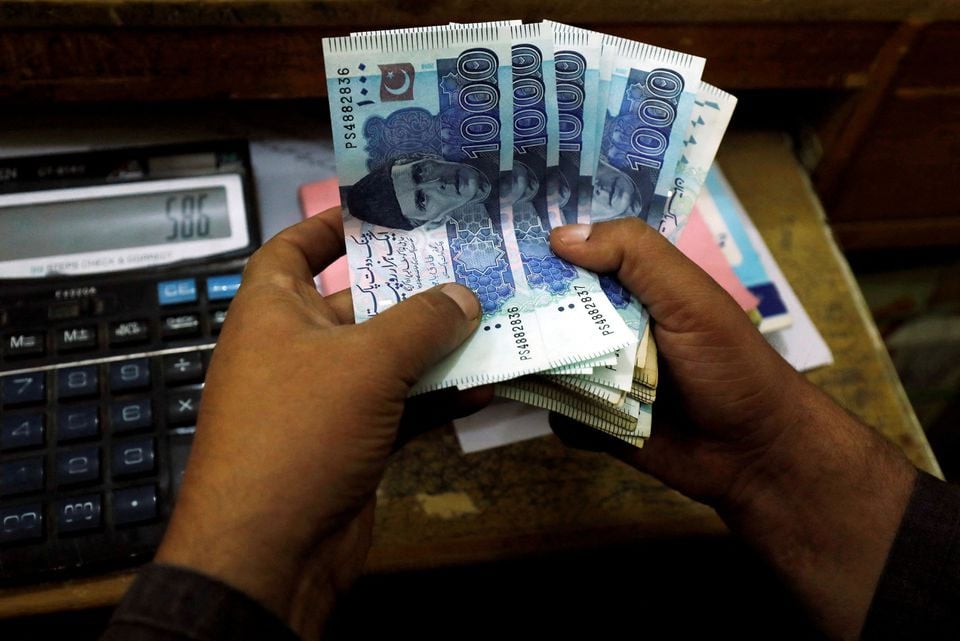
The federal statistical discrepancy – a term used to describe untraceable expenses or unknown revenues – shot up dangerously to nearly Rs320 billion during the first half of this fiscal year, admitted the Ministry of Finance on Wednesday.
The fiscal operations summary report for the July-December 2022 period showed that due to a huge discrepancy, the federal government’s total expenses did not match with its current expenditures – causing another inconsistency in numbers.
The report showed that there was no trace of Rs319.6 billion of the federal government’s spending or revenues, which the finance ministry has described as a “statistical discrepancy”, reflecting the poor working of the finance ministry’s budget wing.
As a result, the federal government’s total expenditure has been shown at Rs4.247 trillion – Rs147 billion less than the current expenses of Rs4.390 trillion, as shown by the finance ministry.
The huge discrepancies raise questions over the credibility of the figures released by the ministry, a dilemma that the International Monetary Fund (IMF) is also facing.
The report showed that interest expenses have shot-up significantly to Rs2.57 trillion during the first half of this fiscal year. This equals 65% of the annual debt servicing budget; an alarming increase of 77% in the cost of interest on the federal government’s debt stock.
Domestic debt servicing stood at Rs2.27 trillion or equal to 88.3% of total debt servicing. External debt servicing amounted to Rs300 billion; a 152% increase compared to the same period a year ago.
Development expenses amounted to only Rs162 billion in six months – equal to only 6.2% of the debt servicing cost.
Pakistan has informed the IMF that the cost of debt servicing may rise to nearly Rs5.2 trillion in this fiscal year – equalling more than half of this year’s total budget of Rs9.6 trillion.
Despite the precarious situation, the finance ministry seems to be indifferent towards the biggest challenge threatening the country’s long-term viability. There is an urgent need to restructure domestic debt and create some fiscal space – this can also strengthen Pakistan’s case for foreign debt restructuring.
In view of this, Prime Minister Shehbaz Sharif has appointed seven more members to the federal cabinet, taking the total to 85 – including special assistants. While these special assistants are said to be appointed on ‘pro bono basis’, they still avail official vehicles, offices, staff and residences.
Excluding military pensions and expenses on the armed forces development programme, Rs638 billion was spent on defence in six months – Rs118 billion or nearly 23% more than last year. The annual stated defence budget is Rs1.563 trillion and six-month spending is in line with the allocation.
With a net income of Rs2.46 trillion, accumulative spending on debt servicing and defence jumped to over Rs3.2 trillion – 130% or Rs749 billion more than the government’s net income – suggesting that Pakistan will remain debt trapped as expenses are not being curtailed.
Compared to the Rs3.2 trillion spent on debt servicing and defence, only Rs162 billion was spent on development. All the other expenses of the government amounted to Rs1.1 trillion, down compared to the previous year. The cost of running the civil government was only Rs227 billion in six months, while subsidies amounted to Rs197 billion.
Under the IMF programme, Pakistan has committed converting the primary deficit, calculated after excluding interest payments, into a surplus of 0.2% of GDP, down from last fiscal year’s 3.6%. As a result of uncontrolled spending, however, the government will miss the deficit target agreed upon with the lender.
The federal budget deficit widened to nearly Rs1.8 trillion in the first six months of the current fiscal year, as the gap between expenses and revenues was equal to 2% of the GDP.
During the current fiscal year, the government’s total expenditure shot up to nearly Rs4.24 trillion – thanks to the huge statistical discrepancy. Current expenditure, however, only rose to over Rs4.4 trillion. Gross revenues swelled to Rs4.34 trillion and Rs1.9 trillion of the federal tax share was transferred to the provinces.
According to the finance ministry, the statistical discrepancy occurred due to a Rs319 billion addition in the cash deposits of the government and its entities. It added that the deposits have jumped from Rs2 trillion to Rs2.3 trillion, causing a reduction in the overall expenses. These deposits have been identified as part of the IMF’s conditions to implement a Treasury Single Account (TSA).
Published in The Express Tribune, February 9th, 2023.
Like Business on Facebook, follow @TribuneBiz on Twitter to stay informed and join in the conversation.


1732184775-0/BeFunky-collage-(80)1732184775-0-165x106.webp)

1731933289-0/BeFunky-collage-(68)1731933289-0-165x106.webp)
















COMMENTS (5)
Comments are moderated and generally will be posted if they are on-topic and not abusive.
For more information, please see our Comments FAQ